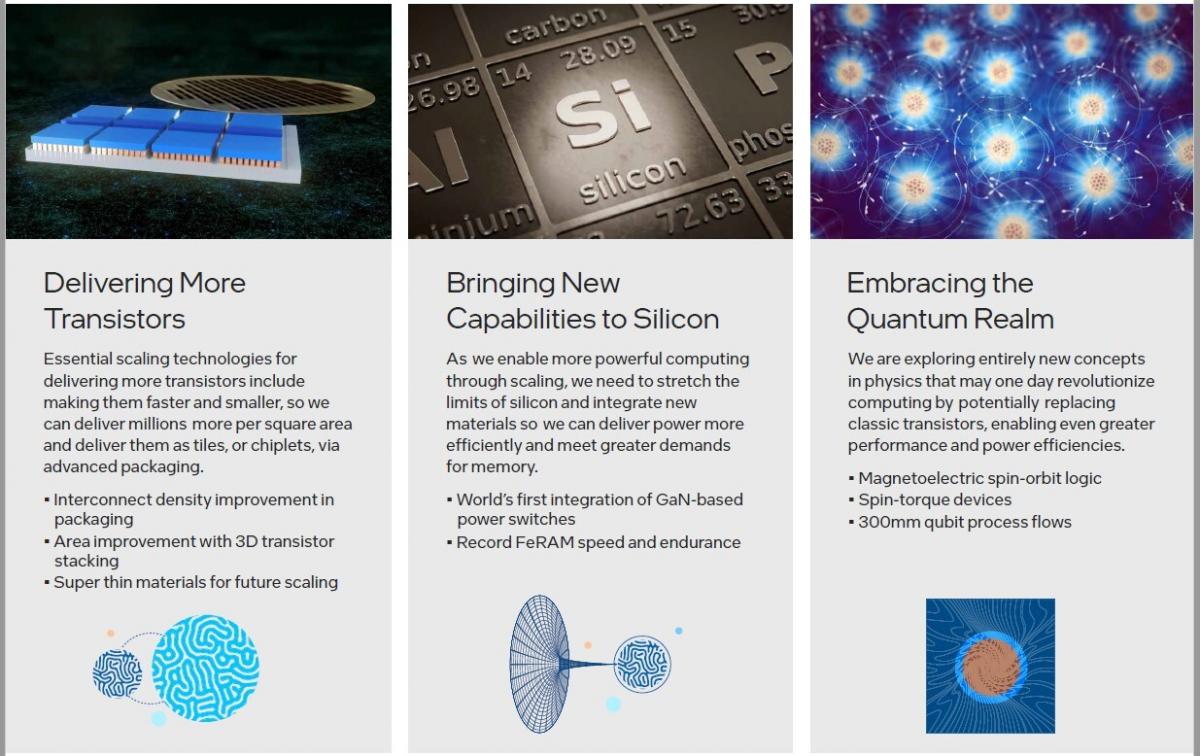
There are a lot of things that Intel wants to do with computer chips in the next few years. At an international conference in San Francisco on Saturday, Intel said they would make that promise, according to the Reuters news service.
If Intel researchers stack transistors in the chip in a certain way, they think they can make the chips even smaller than before. As many as 30% to 50% more transistors could be put on a chip this way, says Intel, which is making the changes. We want Intel to again be the chip company with the smallest and fastest chips. We want to do this by 2025. Taiwan Semiconductor Manufacturing and Samsung Electronics have overtaken the company in the last few years, taking the top spot.
- Intel -
Intel outlined its path toward more than 10x interconnect density improvement in packaging with hybrid bonding, 30% to 50% area improvement in transistor scaling, major breakthroughs in new power and memory technologies, and new concepts in physics that may one day revolutionize computing.
"At Intel, the research and innovation necessary for advancing Moore's Law never stops. Our Components Research Group is sharing key research breakthroughs at IEDM 2021 in bringing revolutionary process and packaging technologies to meet the insatiable demand for powerful computing that our industry and society depend on. This is the result of our best scientists' and engineers' tireless work. They continue to be at the forefront of innovations for continuing Moore's Law," said Robert Chau, Intel Senior Fellow and general manager of Components Research.
Moore's Law has been tracking innovations in computing that meet the demands of every technology generation from mainframes to mobile phones. This evolution is continuing today as we move into a new era of computing with unlimited data and artificial intelligence.
Continuous innovation is the cornerstone of Moore's Law. Intel's Components Research Group is committed to innovating across three key areas: essential scaling technologies for delivering more transistors; new silicon capabilities for power and memory gains; and exploration of new concepts in physics to revolutionize the way the world does computing. Many of the innovations that broke through previous barriers of Moore's Law and are in today's products started with the work of Component Research - including strained silicon, Hi-K metal gates, FinFET transistors, RibbonFET, and packaging innovations including EMIB and Foveros Direct.
The breakthroughs revealed at IEDM 2021 demonstrate Intel is on track to continue the advancement and benefits of Moore's Law well beyond 2025 through its three areas of pathfinding.Intel is pursuing significant research in essential scaling technologies for delivering more transistors in future product offerings:
2. Intel is bringing new capabilities to silicon:
3. Intel is pursuing massive performance with silicon transistor-based quantum computing, as well as entirely new switches for massively energy-efficient computing with novel room temperature devices. In the future, these revelations may replace classic MOSFET transistors by using entirely new concepts in physics: